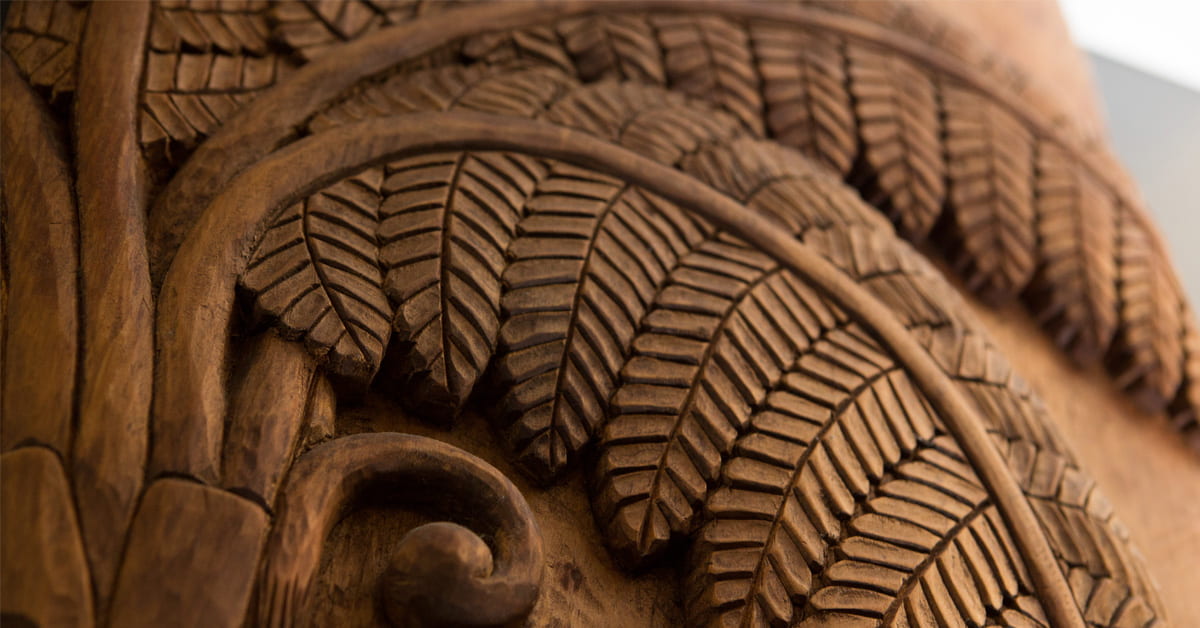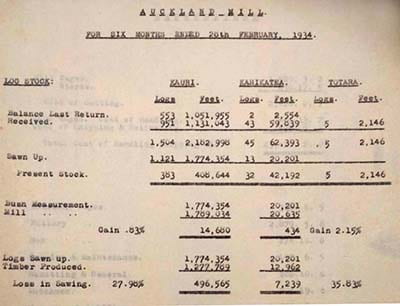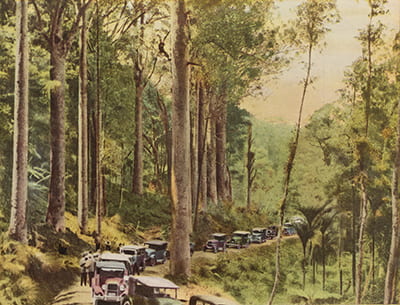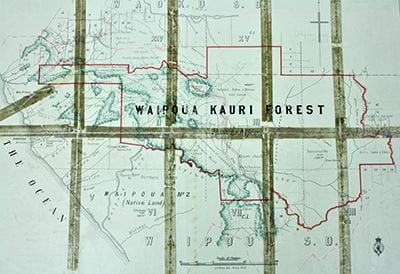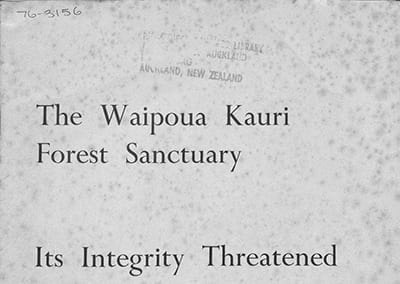The United Nations declared 2020 as the International Year of Plant Health to focus attention on how protecting plant health ‘can help end hunger, reduce poverty, protect the environment, and boost economic development.’1
To acknowledge that, we share some items here from the collections that highlight Te Wao Tapu Nui a Tāne: the great sacred forests of Tāne. Forests play a vital role in keeping te taiao healthy by producing oxygen, absorbing carbon dioxide and providing a kāinga for other plants and animals, some of which are only found in this ecosystem.
Forest taonga
Kauri and tōtara forests are bound to many Māori customary rituals and protocols and provide us with many lessons on the importance of keeping te taiao and tangata healthy. Kōrero nehe reminds us of the importance of Tāne and his progeny, including the giant Tōtaranui. Given its mana, tōtara is reserved for the most sacred places and objects such as the making of waka or the creation of taonga puoro, and its resin is used in the making of customary medicines. Tikanga Māori has an important role to play in environmental management, including protection of our forests from biosecurity risks, threats and diseases, such as kauri die-back.
Altered lands
European settlers saw the great resource value of native timber and other materials such as kauri resin and amber. Although controversial, some entrepreneurial rangatira were also quick to seize the economic opportunities associated with felling kauri on their lands for the newly created market. It is estimated that more than 1.2 million hectares of native forest once covered the north of the country; less than a quarter of that remains, with most felled for timber or cleared for farming.3 Kauri, tōtara and other species were valued for local markets and as a major export. Firms like the Kauri Timber Company built sawmills near forests and towns grew up around these mills, providing employment and economic growth.2
The country’s native forests have also always been popular visitor attractions. The 1937 New Zealand Railways promotional illustration below shows passengers from a special ‘Commerce Train’ in the Waipoua Forest.4
Conservation and protection
Many people and organisations have worked hard over the decades to help preserve our remaining native forests through national parks, forest areas and reserves. One such person was University of Auckland Professor William R. McGregor who produced a report on protecting native forests from unsustainable logging practices and mass tourism development.6 Part of the Waipoua Forest Reserve was named after him in recognition of that work.
The Covid-19 pandemic has been a powerful reminder of how fragile our world is. It has also provided insights into the importance of resilience and community action, highlighting the role that people can play individually and collectively to achieve a common goal. The International Year of Plant Health reminds us that human health and plant health are interconnected and that similar community action is required to safeguard the well-being of our forest environments.
Dr Nigel Bond, Special Collections Team Leader
Top image
Detail of whakairo by Tim Codyre in Te Herenga Mātauranga Whānui (General Library).
References
1 Food and Agriculture Organization of the United Nations. (n.d.) About. International Year of Plant Health 2020. http://www.fao.org/plant-health-2020/about/en/
2 Kauri Timber Company Records, MSS & Archives A-222, box 6, folder 6, Special Collections.
3 Kauri 2000 Project. (n.d.). History of Kauri. Kauri 2000. https://www.kauri2000.co.nz/2017/03/11/the-history-of-kauri/
4 New Zealand Railways. Publicity and Advertising Branch. (1937). New Zealand Railways Illustrated. Wellington: Printed by Ferguson & Osborn. New Zealand Glass Case 919.5 R15
5 Cockayne, L. (1908). Report on a botanical survey of the Waipoua Kauri Forest. Department of Lands. Map Room 919.313 .K2 N53 1908.
6 McGregor, W.R. (1967?). The Waipoua Kauri Forest Sanctuary: Its integrity threatened. Wellington, N.Z.: Royal Forest and Bird Protection Society of New Zealand. NZ Pamphlets 14-001.

